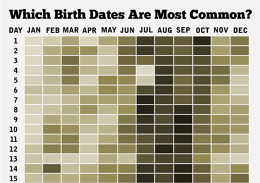Loren Brichter

Tweetie wasn’t the first iOS Twitter app, but it did connect with users in a way the others didn't. Clean, simple, and intuitive, the app was so compelling Twitter acquired it, rebranded, and turned it into their official mobile offering. It’s natural to reach your thumb to the top of your phone’s screen and pull down to refresh the page, even now part of Apple’s core apps. It was Brichter, though, that designed that feature, implementing it in one of Tweetie’s updates. Even just a few years later, the pull-to-refresh gesture took on a life of its own and became bigger than any single app, but Brichter himself moved on to a different type of app. Following Tweetie, and working at Twitter, Brichter decided to head back to work for himself producing award-winning game Letterpress. Proving his thoughtful touch on each app developed, Letterpress takes on new UI challenges and makes the most of minimal elements. There's a flurry around any new apps Loren Brichter releases for good reason, he understands mobile design and constraints, giving people something very interesting.
Marco Arment

First with Instapaper, then with The Magazine, Marco Arment is now known for trailblazing and pushing different categories of apps into public awareness. Instapaper was, surprisingly, a unique idea at the time of introduction that is now copied by dozens, including Apple in their Safari web browser. From a technical standpoint, Arment’s follow-up app, The Magazine, took aim at big publishers with their unruly download sizes and inefficient magazine mechanics. The Magazine was truly an app built for a mobile device, specifically iPhone or iPad. Not only that, but Arment was also looking to leverage one of Apple’s newer features, Newsstand, which was a dedicated storefront for digital reading content. Success with both apps led to Arment selling both, at different times to different entities, in search of his stated passion, programming. His third app is set to debut sometime later in 2013.
Steve Demeter

In July of 2008, the App Store was an untested novelty. The demand and appeal were in place, but it wasn’t until Steve Demeter went public with his app’s success, stating he had made $250,000 in two months, as a solo developer did the potential become fully realized. Demeter was the man behind the puzzle game Trism. iPhone users around at the inception of the App Store will remember the triangle shapes which played off a Bejeweled style gameplay. Initially offered as a free download for the jailbreak community before any official SDK was available, Demeter’s Trism was the app every independent developer dreamed of making. Trism 2 looks to have a 2013 release with the developer regaining an appreciation for what made his initial game such a hit.
Gentry Underwood

Unlike some of the other mobile developers, Gentry Underwood’s first app, Orchestra, didn’t take off in the way he might have wanted. His initial app was a collaborative to-do app failing to grow beyond the weeds of the crowded space. Pivoting the whole company, Underwood took on email with the now famous mobile client, Mailbox. Mailbox’s appeal comes from a design built from the phone up, rather than from the desktop down. Underwood focused his development process on the “why.” Why would someone want or need a new email client, answering the “why” with genre-bending concepts that turned emails into to-do items. Not only did Underwood create an app that managed to convince consumers, he managed to join a small club of developers that have been acquired by a company capable of taking the popular app to the next, mainstream, level. The thing that Underwood makes mention to in regards to Mailbox’s design and success is the extreme focus on user experience. A trait that can never be underestimated.
Silvio Rizzi

Swiss developer Silvio Rizzi was the first to capture what a mobile RSS reading experience should, or could, be on the iPhone. Despite the original back end--Google Reader--shutting down, Reeder has continued to push people in one RSS direction or another in order to keep using the fluid app. Incorporating natural gestures, Reeder’s standout features were speed and a cohesive design sense. Demand eventually pushed Rizzi into taking Reeder to both the iPad and the Mac. A little foreign at first, taking Reeder to the Mac put Rizzi ahead of the Apple’s curve of bring iOS elements "back to the Mac." It’s this insight that has kept each major version of Reeder ahead of the curve in some way, continually bringing Rizzi's dedicated fan base along as well.
Mike Matas

Mike Matas has been a staple in development and design long before the iPhone and mobile revolution. Most recently the founder of Push Pop Press, Matas was on the verge of doing some radical things in independent publishing before Facebook acquired the company. To be fair, those radical things may still be coming, just under a new name. Push Pop Press’s first and only mobile app was a book for Al Gore, explaining his solution for climate change. Before Push Pop, Matas was the man behind Delicious Library on the Mac and the learning thermostat, Nest. Matas also worked at Apple contributing to the user interface of the iPhone and iPad. It doesn’t matter the pitch, if Mike Matas has touched a project, it should be something you’re interested in finding out more about, simple as that.
Kevin Systrom and Mike Krieger

Photo sharing before Instagram? It happened, but even just a few years in, it’s hard to remember a time before filtering snapshots. Kevin Systrom and Mike Krieger not only convinced other developers that their photo feed was a good idea, but they scared the largest social network on the planet--Facebook--with a real threat on mobile. Even as the app grew quickly in popularity Systrom famously kept the team behind the project small. A risky move in order to keep up with the workload that ended up paying off as the app was always stable and responsive. Was it the filters, design, or just the network effect that propelled Instagram to become the game-changing app most people consider irreplaceable? In addition to the right time and place, it’s probably a little of each.
Phill Ryu

Phill Ryu doesn’t just have one or two apps to his name, but a list of some of the top App Store apps over the years. First with the reading app Classics, then joining the development house Taptaptap, which produced Camera+ and The Heist, to name a few. Ryu also had a hand in making Clear, the bold to-do app that left a trail of imitation apps in its path. All the apps Ryu has been a part of have pushed the boundaries, ventured into territory others hadn’t been. Ryu has started his own development studio, Impending, and is currently working on its first title. There’s little doubt Impending and Ryu will keep pushing the limits of app development and figuring out what makes a mobile app sticky and viral.













































